Sky: Goodchild
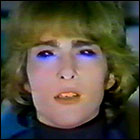 The third episode of the children’s science fiction series Sky airs on ITV, created and written by Bob Baker and Dave Martin (later the creators of K-9 for Doctor Who). David Jackson (Blake’s 7) guest stars.
The third episode of the children’s science fiction series Sky airs on ITV, created and written by Bob Baker and Dave Martin (later the creators of K-9 for Doctor Who). David Jackson (Blake’s 7) guest stars.
 The third episode of the children’s science fiction series Sky airs on ITV, created and written by Bob Baker and Dave Martin (later the creators of K-9 for Doctor Who). David Jackson (Blake’s 7) guest stars.
The third episode of the children’s science fiction series Sky airs on ITV, created and written by Bob Baker and Dave Martin (later the creators of K-9 for Doctor Who). David Jackson (Blake’s 7) guest stars.
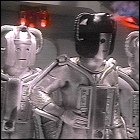 The 399th episode of Doctor Who airs on BBC1. This story marks the Cybermen‘s first story since the Troughton era, and closes out both the series’ 12th season and the “Nerva” plotline.
The 399th episode of Doctor Who airs on BBC1. This story marks the Cybermen‘s first story since the Troughton era, and closes out both the series’ 12th season and the “Nerva” plotline.
More about Doctor Who in the LogBook
Order VWORP!1 from theLogBook.com Store
 The 35th episode of The Six Million Dollar Man is broadcast on ABC, starring Lee Majors and Richard Anderson. Gary Lockwood (The Lieutenant, 2001: a space odyssey) guest stars in the second season finale.
The 35th episode of The Six Million Dollar Man is broadcast on ABC, starring Lee Majors and Richard Anderson. Gary Lockwood (The Lieutenant, 2001: a space odyssey) guest stars in the second season finale.
More about The Six Million Dollar Man in the LogBook and theLogBook.com Store
This series is not yet fully chronicled in the LogBook. You could help change that.
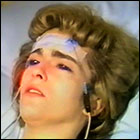 The fourth episode of the children’s science fiction series Sky airs on ITV, created and written by Bob Baker and Dave Martin (later the creators of K-9 for Doctor Who).
The fourth episode of the children’s science fiction series Sky airs on ITV, created and written by Bob Baker and Dave Martin (later the creators of K-9 for Doctor Who).
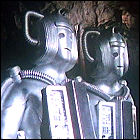 The 400th episode of Doctor Who airs on BBC1. This story marks the Cybermen‘s first story since the Troughton era, and closes out both the series’ 12th season and the “Nerva” plotline.
The 400th episode of Doctor Who airs on BBC1. This story marks the Cybermen‘s first story since the Troughton era, and closes out both the series’ 12th season and the “Nerva” plotline.
More about Doctor Who in the LogBook
Order VWORP!1 from theLogBook.com Store
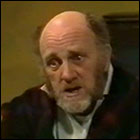 The fifth episode of the children’s science fiction series Sky airs on ITV, created and written by Bob Baker and Dave Martin (later the creators of K-9 for Doctor Who).
The fifth episode of the children’s science fiction series Sky airs on ITV, created and written by Bob Baker and Dave Martin (later the creators of K-9 for Doctor Who).
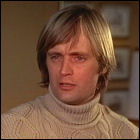 The TV movie-of-the-week The Invisible Man airs on NBC, starring David McCallum (The Man From UNCLE, Colditz), Melinda Fee, and Jackie Cooper. This is the first TV series to credit Harve Bennett (of The Six Million Dollar Man and Star Trek II) as one of its creators, alongside Steven Bochco, for whom The Invisible Man is his second such credit. The movie achieves a high enough rating to merit a series pickup later in 1975.
The TV movie-of-the-week The Invisible Man airs on NBC, starring David McCallum (The Man From UNCLE, Colditz), Melinda Fee, and Jackie Cooper. This is the first TV series to credit Harve Bennett (of The Six Million Dollar Man and Star Trek II) as one of its creators, alongside Steven Bochco, for whom The Invisible Man is his second such credit. The movie achieves a high enough rating to merit a series pickup later in 1975.
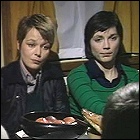 The fourth episode of Terry Nation’s post-apocalyptic series Survivors, Corn Dolly premieres on the BBC.
The fourth episode of Terry Nation’s post-apocalyptic series Survivors, Corn Dolly premieres on the BBC.
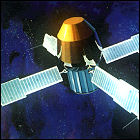 NASA launches Explorer 53, renamed Small Astronomy Satellite C, from an Italian-owned offshore launch platform off the coast of Kenya. SAS-C is a smaller spacecraft than NASA’s larger Orbiting Astronomical Observatory (OAO) series, but can be aimed very precisely at any cosmic X-ray sources that it detects. One of SAS-C’s discoveries is MXB1730-33, a binary star giving off rapid X-ray bursts. SAS-C will remain in orbit and functional until it re-enters Earth’s atmosphere in 1979.
NASA launches Explorer 53, renamed Small Astronomy Satellite C, from an Italian-owned offshore launch platform off the coast of Kenya. SAS-C is a smaller spacecraft than NASA’s larger Orbiting Astronomical Observatory (OAO) series, but can be aimed very precisely at any cosmic X-ray sources that it detects. One of SAS-C’s discoveries is MXB1730-33, a binary star giving off rapid X-ray bursts. SAS-C will remain in orbit and functional until it re-enters Earth’s atmosphere in 1979.
 The 401st episode of Doctor Who airs on BBC1. This story marks the Cybermen‘s first story since the Troughton era, and closes out both the series’ 12th season and the “Nerva” plotline.
The 401st episode of Doctor Who airs on BBC1. This story marks the Cybermen‘s first story since the Troughton era, and closes out both the series’ 12th season and the “Nerva” plotline.
More about Doctor Who in the LogBook
Order VWORP!1 from theLogBook.com Store
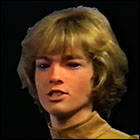 The sixth episode of the children’s science fiction series Sky airs on ITV, created and written by Bob Baker and Dave Martin (later the creators of K-9 for Doctor Who).
The sixth episode of the children’s science fiction series Sky airs on ITV, created and written by Bob Baker and Dave Martin (later the creators of K-9 for Doctor Who).
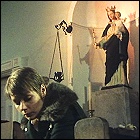 The fifth episode of Terry Nation’s post-apocalyptic series Survivors, Gone To The Angels premieres on the BBC.
The fifth episode of Terry Nation’s post-apocalyptic series Survivors, Gone To The Angels premieres on the BBC.
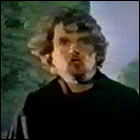 The seventh and final episode of the children’s science fiction series Sky airs on ITV, created and written by Bob Baker and Dave Martin (later the creators of K-9 for Doctor Who). Bernard Archard guest stars.
The seventh and final episode of the children’s science fiction series Sky airs on ITV, created and written by Bob Baker and Dave Martin (later the creators of K-9 for Doctor Who). Bernard Archard guest stars.
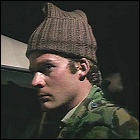 The sixth episode of Terry Nation’s post-apocalyptic series Survivors, Garland’s War premieres on the BBC. This episode introduces the adversaries that the series regulars will face off against several times for the rest of Survivors’ run.
The sixth episode of Terry Nation’s post-apocalyptic series Survivors, Garland’s War premieres on the BBC. This episode introduces the adversaries that the series regulars will face off against several times for the rest of Survivors’ run.
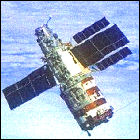 Soyuz 18 is launched toward space station Salyut 4 by the Soviet Union. Cosmonauts Pyotr Klimuk and Vitali Sevastyanov set a new Soviet record for long-duration stays in space, remaining about Salyut 4 for two months. They are also aboard Salyut 4 during the entirety of the Apollo-Soyuz Test Project, and are able to contact that international mission’s Soviet crew in another Soyuz vehicle. (Two mission control centers are used to prevent any confusion between the two Soyuz crews.) At the time the Soyuz 18 crew abandons Salyut 4 in July, the station’s environmental systems are failing, allowing the atmosphere inside the station to become humid enough for mold to begin growing on surfaces in the crew compartment; no further human crews will visit the station.
Soyuz 18 is launched toward space station Salyut 4 by the Soviet Union. Cosmonauts Pyotr Klimuk and Vitali Sevastyanov set a new Soviet record for long-duration stays in space, remaining about Salyut 4 for two months. They are also aboard Salyut 4 during the entirety of the Apollo-Soyuz Test Project, and are able to contact that international mission’s Soviet crew in another Soyuz vehicle. (Two mission control centers are used to prevent any confusion between the two Soyuz crews.) At the time the Soyuz 18 crew abandons Salyut 4 in July, the station’s environmental systems are failing, allowing the atmosphere inside the station to become humid enough for mold to begin growing on surfaces in the crew compartment; no further human crews will visit the station.
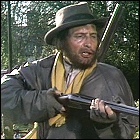 The seventh episode of Terry Nation’s post-apocalyptic series Survivors, Starvation premieres on the BBC.
The seventh episode of Terry Nation’s post-apocalyptic series Survivors, Starvation premieres on the BBC.
 The eighth episode of Terry Nation’s post-apocalyptic series Survivors, Spoil Of War premieres on the BBC.
The eighth episode of Terry Nation’s post-apocalyptic series Survivors, Spoil Of War premieres on the BBC.
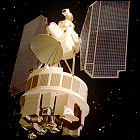 NASA launches the Nimbus 6 satellite, designed to observe weather patterns from orbit and test new weather and climate detection technologies. In addition to continuing the microwave and infrared observations carried out by Nimbus 5, Nimbus 6 studies the amount of solar radiation reaching or reflected by Earth, and sends real-time observations to the experimental ATS-6 satellite, allowing NASA to test techniques and technologies that will be used in the shuttle-era TDRS (Tracking & Data Relay Satellite) system.
NASA launches the Nimbus 6 satellite, designed to observe weather patterns from orbit and test new weather and climate detection technologies. In addition to continuing the microwave and infrared observations carried out by Nimbus 5, Nimbus 6 studies the amount of solar radiation reaching or reflected by Earth, and sends real-time observations to the experimental ATS-6 satellite, allowing NASA to test techniques and technologies that will be used in the shuttle-era TDRS (Tracking & Data Relay Satellite) system.
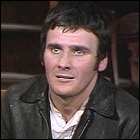 The ninth episode of Terry Nation’s post-apocalyptic series Survivors, Law And Order premieres on the BBC.
The ninth episode of Terry Nation’s post-apocalyptic series Survivors, Law And Order premieres on the BBC.
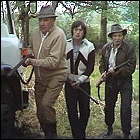 The tenth episode of Terry Nation’s post-apocalyptic series Survivors, The Future Hour premieres on the BBC.
The tenth episode of Terry Nation’s post-apocalyptic series Survivors, The Future Hour premieres on the BBC.
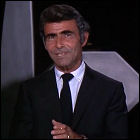 Celebrated writer Rod Serling dies at the age of 50 during a coronary bypass operation. An intelligent, rebellious mind from a young age, Serling developed an interest in writing – particularly for radio drama – before he graduated high school. He had also already developed a keen social consciousness at this age, which, combined with his authority-bucking nature, made his enlistment in the Army during World War II (immediately after graduating high school) an uneasy fit. As an Army paratrooper, Serling fought to liberate the Philippines from Japanese occupation. He was injured in combat and saw many of his comrades wounded or killed along the way, experiences which game him nightmares and informed many of his later works. He began his writing career in earnest after attending college on the G.I. Bill, and as radio gave way to television, he was at the forefront of the new profession of TV writing, with two scripts for anthology series – Patterns for Kraft Television Theatre and Requiem For A Heavyweight for Playhouse 90 – serving as career turning points. With corporate sponsors holding enormous sway over TV content in those days, Serling quickly found himself railing against the interference and outright censorship that resulted. Another anthology script, The Time Element, was intended as a pilot for an anthology Serling pitched to CBS, but was instead produced as an episode of Westinghouse Desilu Playhouse; it proved popular enough to get The Twilight Zone greenlit by CBS. Serling often used science fiction and supernatural settings in his new series to address issues such as racism, fascism, racial inequality, and the futility of war. He famously wrote many script drafts for 1968’s Planet Of The Apes, and returned to the anthology format in 1969 with a new series for NBC, Night Gallery, and, following that series, a radio drama suspense series called The Zero Hour for Mutual Radio.
Celebrated writer Rod Serling dies at the age of 50 during a coronary bypass operation. An intelligent, rebellious mind from a young age, Serling developed an interest in writing – particularly for radio drama – before he graduated high school. He had also already developed a keen social consciousness at this age, which, combined with his authority-bucking nature, made his enlistment in the Army during World War II (immediately after graduating high school) an uneasy fit. As an Army paratrooper, Serling fought to liberate the Philippines from Japanese occupation. He was injured in combat and saw many of his comrades wounded or killed along the way, experiences which game him nightmares and informed many of his later works. He began his writing career in earnest after attending college on the G.I. Bill, and as radio gave way to television, he was at the forefront of the new profession of TV writing, with two scripts for anthology series – Patterns for Kraft Television Theatre and Requiem For A Heavyweight for Playhouse 90 – serving as career turning points. With corporate sponsors holding enormous sway over TV content in those days, Serling quickly found himself railing against the interference and outright censorship that resulted. Another anthology script, The Time Element, was intended as a pilot for an anthology Serling pitched to CBS, but was instead produced as an episode of Westinghouse Desilu Playhouse; it proved popular enough to get The Twilight Zone greenlit by CBS. Serling often used science fiction and supernatural settings in his new series to address issues such as racism, fascism, racial inequality, and the futility of war. He famously wrote many script drafts for 1968’s Planet Of The Apes, and returned to the anthology format in 1969 with a new series for NBC, Night Gallery, and, following that series, a radio drama suspense series called The Zero Hour for Mutual Radio.
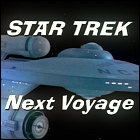 After spending a month writing drafts of the same basic story, Star Trek creator Gene Roddenberry completes the final draft of a live-action script simply titled Star Trek II, though later publications will refer to this script as The God Thing. The script shares many basic structural similarities with the later Star Trek: The Motion Picture, including sweeping upgrades to the Enterprise, Kirk’s promotion out of the captain’s chair, Spock’s return to Vulcan to pursue a purge of his human emotions, and an alien force of unknown power approaching Earth. There, however, the similarities end, as the story depicts an alien entity taking over the minds of Starfleet officers, who begin reciting prayers and exhibiting dangerous degrees of religious zealotry. Kirk and his senior officers, of course, remain unaffected, and disobey the orders of their possessed superiors to save Earth, only to discover that the “God” entity is an alien being which has been influencing human development for thousands of years, having last appeared in a guise which inspired the Judeo-Christian belief system. Likely out of fear of offending its potential audience, The God Thing is swiftly rejected by Paramount, though Bantam Books expresses interest in Roddenberry novelizing his own unused script. Work on that novelization comes to a halt in 1977 as Roddenberry begins work on a prospective Star Trek TV revival, and though other authors will attempt to adapt Roddenberry’s script – including Walter Koenig, Susan Sackett and Fred Bronson, and frequent Trek novelist Michael Jan Friedman – The God Thing remains unpublished. Many elements of the story resurface in Star Trek: The Motion Picture and Star Trek V: The Final Frontier.
After spending a month writing drafts of the same basic story, Star Trek creator Gene Roddenberry completes the final draft of a live-action script simply titled Star Trek II, though later publications will refer to this script as The God Thing. The script shares many basic structural similarities with the later Star Trek: The Motion Picture, including sweeping upgrades to the Enterprise, Kirk’s promotion out of the captain’s chair, Spock’s return to Vulcan to pursue a purge of his human emotions, and an alien force of unknown power approaching Earth. There, however, the similarities end, as the story depicts an alien entity taking over the minds of Starfleet officers, who begin reciting prayers and exhibiting dangerous degrees of religious zealotry. Kirk and his senior officers, of course, remain unaffected, and disobey the orders of their possessed superiors to save Earth, only to discover that the “God” entity is an alien being which has been influencing human development for thousands of years, having last appeared in a guise which inspired the Judeo-Christian belief system. Likely out of fear of offending its potential audience, The God Thing is swiftly rejected by Paramount, though Bantam Books expresses interest in Roddenberry novelizing his own unused script. Work on that novelization comes to a halt in 1977 as Roddenberry begins work on a prospective Star Trek TV revival, and though other authors will attempt to adapt Roddenberry’s script – including Walter Koenig, Susan Sackett and Fred Bronson, and frequent Trek novelist Michael Jan Friedman – The God Thing remains unpublished. Many elements of the story resurface in Star Trek: The Motion Picture and Star Trek V: The Final Frontier.
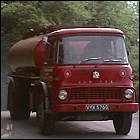 The 12th episode of Terry Nation’s post-apocalyptic series Survivors, Something Of Value premieres on the BBC.
The 12th episode of Terry Nation’s post-apocalyptic series Survivors, Something Of Value premieres on the BBC.
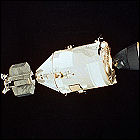 The final launch of an Apollo spacecraft takes place as the last Saturn rocket carries the American component of the Apollo-Soyuz Test Project into orbit. A cooperative international mission intended to see the Apollo capsule dock with a Soviet-launched Soyuz, the ASTP will be the last Apollo flight as the push toward the reusable Space Shuttle takes over NASA’s resources and planning. Aboard the Apollo command/service module are Commander Thomas Stafford, command module pilot Vance Brand, and docking module pilot Deke Slayton, the last of the seven original Mercury astronauts to reach space (heart conditions have prevented him from taking part in a mission until now). Soyuz 19, carrying cosmonauts Alexei Leonov and Valery Kubasov, lifts off a few hours earlier.
The final launch of an Apollo spacecraft takes place as the last Saturn rocket carries the American component of the Apollo-Soyuz Test Project into orbit. A cooperative international mission intended to see the Apollo capsule dock with a Soviet-launched Soyuz, the ASTP will be the last Apollo flight as the push toward the reusable Space Shuttle takes over NASA’s resources and planning. Aboard the Apollo command/service module are Commander Thomas Stafford, command module pilot Vance Brand, and docking module pilot Deke Slayton, the last of the seven original Mercury astronauts to reach space (heart conditions have prevented him from taking part in a mission until now). Soyuz 19, carrying cosmonauts Alexei Leonov and Valery Kubasov, lifts off a few hours earlier.
 The 13th episode of Terry Nation’s post-apocalyptic series Survivors, A Beginning premieres on the BBC, bringing the first season to an end. This is the final episode to feature Carolyn Seymour, and the last episode to be written by series creator Terry Nation.
The 13th episode of Terry Nation’s post-apocalyptic series Survivors, A Beginning premieres on the BBC, bringing the first season to an end. This is the final episode to feature Carolyn Seymour, and the last episode to be written by series creator Terry Nation.
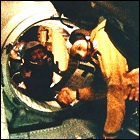 The last Apollo spacecraft to fly makes history by docking with a Soviet-launched Soyuz spacecraft in orbit, allowing the crews to visit each other and conduct joint scientific experiments. The first docking of the Apollo-Soyuz Test Project is hailed as a major development in international relations as well as spaceflight, though it will be 20 years before the feat is repeated. Plans for a second Apollo-Soyuz flight the following year are scuttled due to budget concerns, and the need to commence work on converting NASA’s launch facilities for future shuttle launches rather than further Apollo launches.
The last Apollo spacecraft to fly makes history by docking with a Soviet-launched Soyuz spacecraft in orbit, allowing the crews to visit each other and conduct joint scientific experiments. The first docking of the Apollo-Soyuz Test Project is hailed as a major development in international relations as well as spaceflight, though it will be 20 years before the feat is repeated. Plans for a second Apollo-Soyuz flight the following year are scuttled due to budget concerns, and the need to commence work on converting NASA’s launch facilities for future shuttle launches rather than further Apollo launches.
 Having formed a company mere months before, Micro-Soft – in the persons of young Bill Gates and Paul Allen – make good on their sales pitch to develop a workable BASIC programming language for the Altair 8800 microcomputer. The manufacturer of the Altair, MITS, licenses Micro-Soft BASIC from Gates and Allen, who have put college and everything else on hold to move to Albuquerque to work with the company. Over the next few years, the newly-founded Micro-Soft will create versions of BASIC for other emerging computer systems, and will collide with the free-sharing ethos of computer hobbyist groups, resulting in some of the earliest accusations of computer software piracy.
Having formed a company mere months before, Micro-Soft – in the persons of young Bill Gates and Paul Allen – make good on their sales pitch to develop a workable BASIC programming language for the Altair 8800 microcomputer. The manufacturer of the Altair, MITS, licenses Micro-Soft BASIC from Gates and Allen, who have put college and everything else on hold to move to Albuquerque to work with the company. Over the next few years, the newly-founded Micro-Soft will create versions of BASIC for other emerging computer systems, and will collide with the free-sharing ethos of computer hobbyist groups, resulting in some of the earliest accusations of computer software piracy.